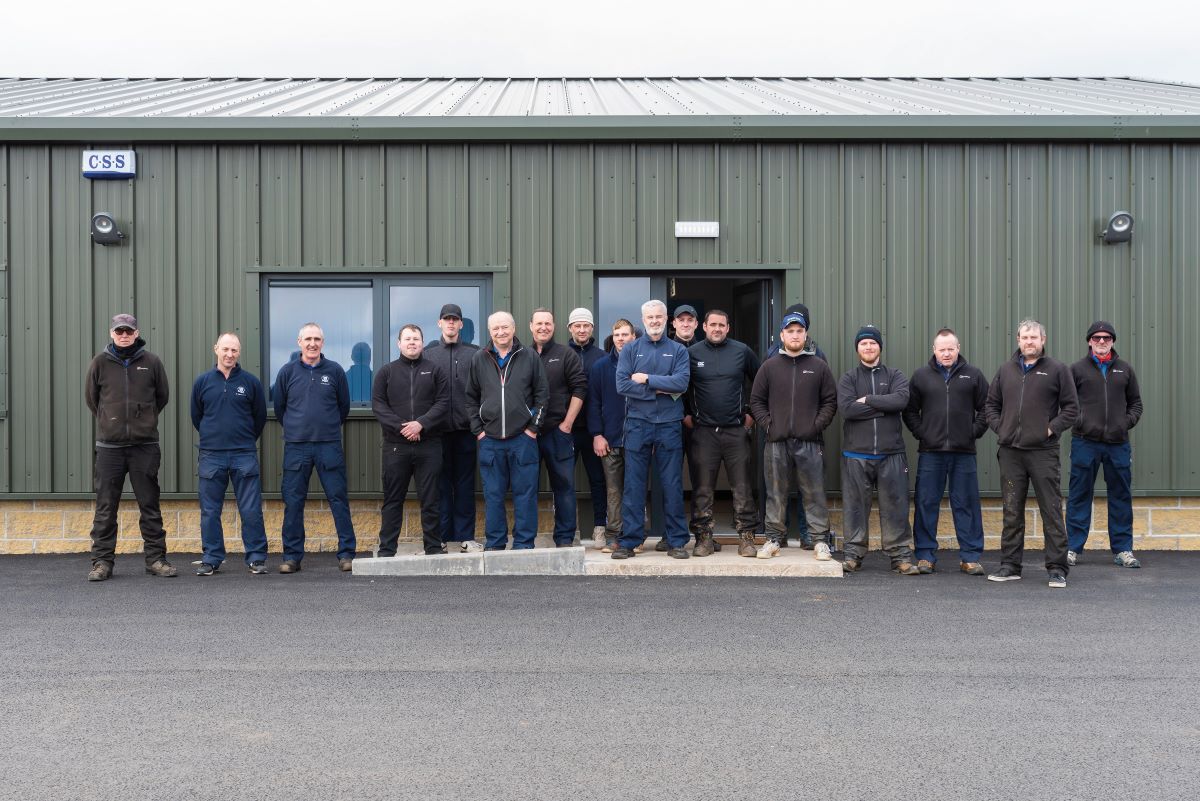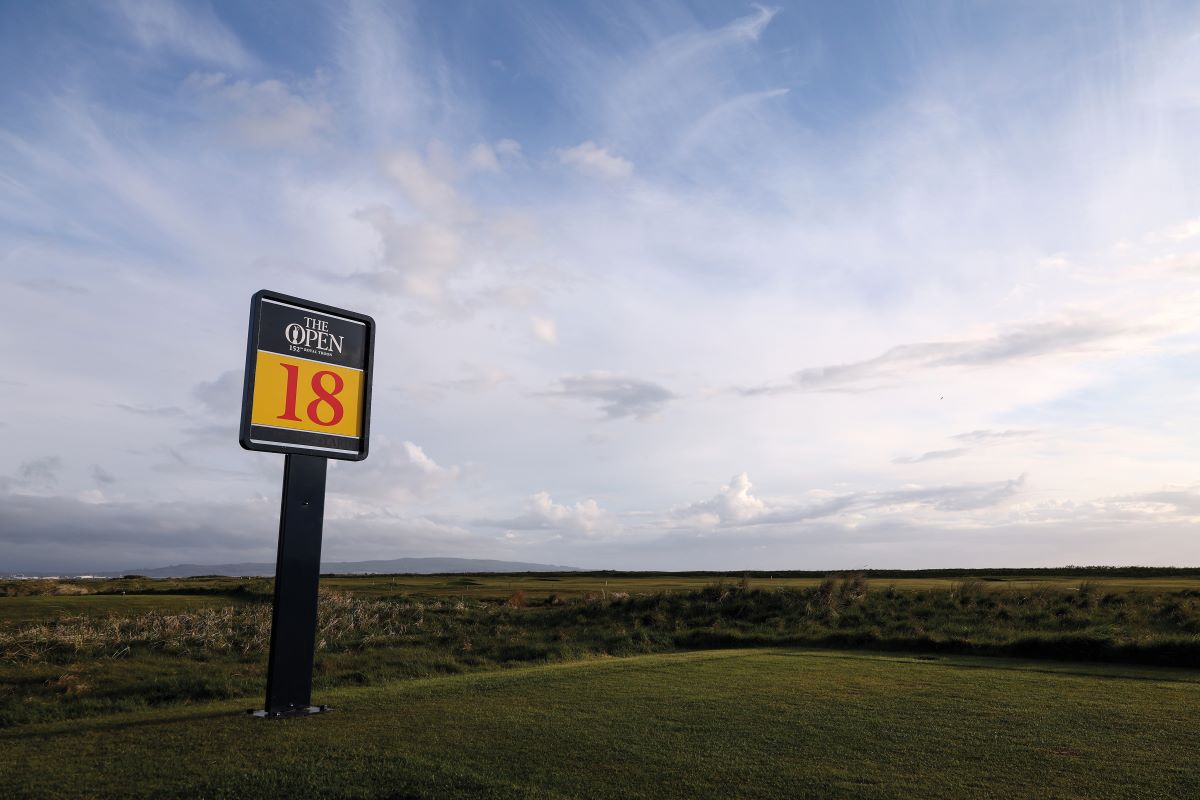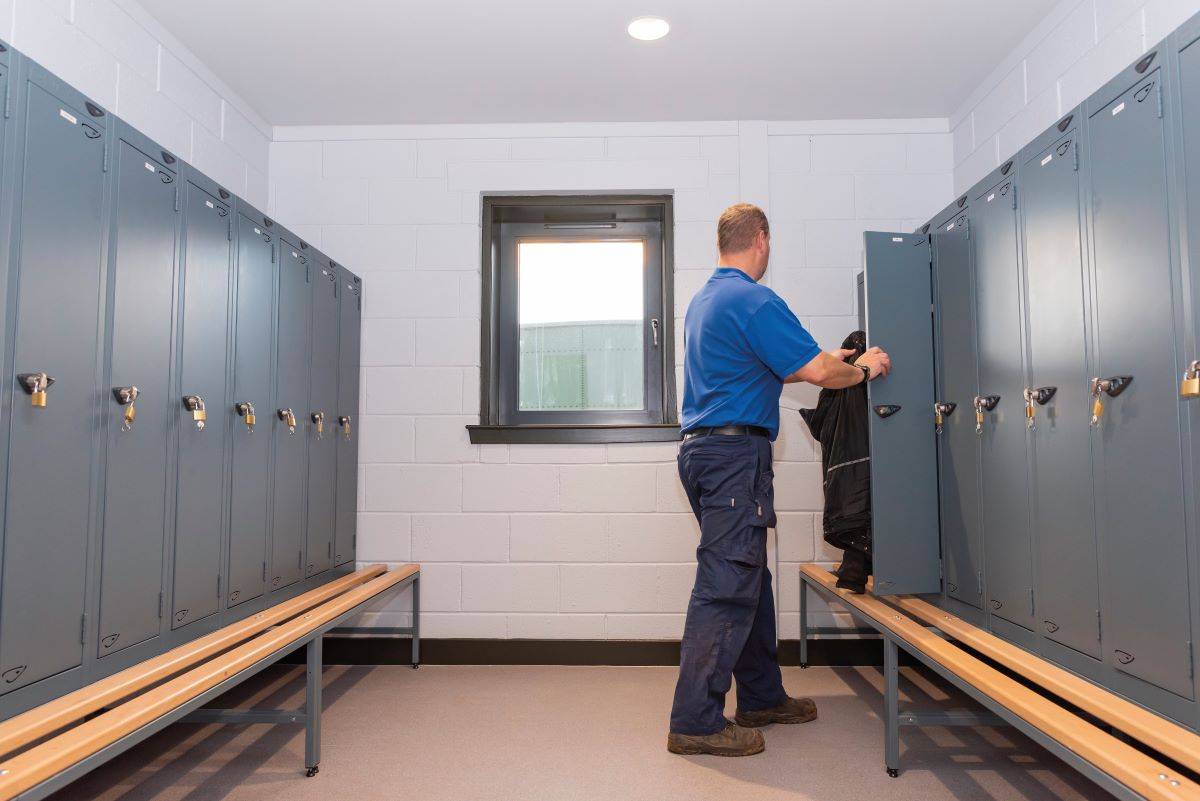- Homepage
- News and Features
- 'I'm about to host my sixth Open at Royal Troon'
'I'm about to host my sixth Open at Royal Troon'
We visited Royal Troon ahead of the 152nd Open to find a course manager who has seen it all before and a team who are truly ready for the biggest week in the golfing calendar.

“It’s a different ballgame compared to what we play on normal Tour events,” said Henrik Stenson following his Open Championship victory at Royal Troon in 2016.
Certainly, this stretch of Ayrshire coastline has its own personality and history, one that’s been shaped for more than 40 years by Course Manager Billy McLachlan, with the help of Gary Ross since 1996.
Deputy Course Manager Gary, who grew up in nearby Prestwick, welcomed members of BIGGA’s South West Scotland Section along for a course walk in the build-up to this year’s Open, and Greenkeeper International tagged along. “If I didn’t like it, I wouldn’t be here,” said Gary, with this year’s set to be his fifth Open on the staff. “Billy’s a great boss, but not just that, he’s a great guy and a great human being.”
Longevity, it seems, is key to the team’s success and it’s rare to find a greenkeeper who has been on the staff for less than 15 years. That experience means they are largely unflustered when The R&A rolls up every eight years or so to host its biggest championship. There have previously been 10 Opens at Royal Troon and half of those have been hosted under the stewardship of Billy, who remains tight-lipped about whether this will be his last.
There are 20 greenkeeping staff at Royal Troon, working across the Old Course (which hosts the championship) and the Portland. They have recently benefitted from the opening of a new greenkeeping compound, which includes offices, a staff room with kitchen, wet and dry changing facilities, showers and toilets. Such sizeable investment suggests Royal Troon, despite its 145-year history, is a club that’s not only looking towards the future, but also appreciates the key role its greenkeeping team has in its ongoing success.

Out on the course and this year’s championship contenders will discover an Old Course that in places has been updated to reflect modern fashions in agronomy and presentation, balanced against tradition and the preservation of old-school values. Areas of rough have been removed to expose large sand scrapes, where exposed sand is visible to the golfer, creating a wilder appearance. Not considered bunkers, these sand scrapes remind the viewer of the dunescape that links courses grew up out of, while providing varied habitat for a range of flora and fauna.
Elsewhere and the course architect Martin Ebert was brought in to redevelop the 9th hole, which now has a stadium feel with high banking around the rear of the green that collects long shots and provides a ready-made viewing platform for spectators. Even Royal Troon’s most famous hole, the Postage Stamp 8th, has been tweaked slightly and Coffin Bunker is deeper than ever, while the 623-yard 6th, Turnberry, has reclaimed the crown of longest hole on the Open rota.
The overall size of greens has been expanded, up from 8,000m2 to just under a hectare, with the opportunity for exciting new pin positions that brings, and it is on the putting surfaces that the greenkeeping team has been focusing most of its efforts. Over 200 tonnes of sand has been injected into the putting surfaces – “We’ve no sand in the sheds, put it that way!” quips Gary – and nitrogen input has increased from 40kg in 2016 to 87kg over the past year. “We want them stronger for everything that’s coming,” Gary added. “It’s just a matter of leaving them alone now because they’ve been through quite a bit.”

An additional 700 tonnes of topdressing sand has been spread onto the surface over the last few years, so it’s useful that Royal Troon quarries its own aggregates from two in-house sites, with a third due to be opened up soon. “Our sand is very fine, it’s probably the finest on The Open rota,” said Gary. “It’s good for bulk density, but everything you learned at college – no. We’re about 70% fines.”
Despite all the sand added to the surface, the organic matter levels have actually increased from 5.7% in the top 20mm to just under 8%. Gary’s belief is that increased pH levels have created an acidic layer that prevents microbes from diluting the organic matter. Increased fescue levels as the course moves into summer will help as that grass species creates less organic matter than the bents that proliferate in winter. But in the longer term the team will need to core the greens, something they haven’t done for years. The planned addition of 260g of lime per square metre over an extended period should reduce the pH levels and, hopefully, organic matter levels.
Revolution wetting agent is used on fairways and Tri-smart on the greens. Increased moisture levels may have led to an increase in moss levels on the surfaces earlier in the year, but Gary attributes that to the consistent cloud cover and wet weather. Efforts last year to reduce moss levels are also paying dividends and have limited the impact this season. That has kept gravities up to a level The R&A’s agronomy team is comfortable with.
During The Open, viewers will see large areas of gorse. The bright yellow flowers may look good for television, but they deter native plantlife and hide the natural undulations of the dunes. Pictures from the 1950s show no gorse on the course, although it is believed tanks that used the area for practice during the Second World War may have brought seeds onto the links. Following the championship, much of this thorny shrubbery will be removed, as will other non-native species such as Japanese rose, willow and Himalayan balsam.
“We’re trying to get it back to how it used to be,” said Gary. “Some places [the gorse] helps, but others it just takes over and I prefer to see the hills and the topography of it all.”
The first six of the Old Course’s holes run directly along the coastline, enhancing the spectacle of the site as the golfer – and television cameras – look out towards Lady Isle and, further afield, Arran. This has long been Royal Troon’s strength, but in 2024 it may prove the venue’s Achilles’ heel, if campaigners that threatened the 2023 championship choose to return. Securing such a large, exposed area isn’t impossible, but the required fencing would certainly reduce the visual impact.
Adding to the spectacle of Royal Troon will be the course’s famous bunkers, the total number of which has been upped by three. In late May, The R&A moved to ease concerns that the bunkers would be too penal, as was seen to be the case in the early rounds of last year’s event at Royal Liverpool. Removing bunker sand took place early in preparations as it gives the revetted faces the opportunity to recover, so there isn’t a clear distinction between the regular surface level and the championship level, particularly as the Royal Troon team prefers to allow the faces to green up, rather than burn them off as has been seen at championships in recent years. This is a telling break from current trends that reminds you of the self-confidence this team has developed after four decades of championship course presentation.

The same weather endured by the rest of the UK has had an impact on preparations in this part of Scotland, too, delaying the conclusion of several projects and contributing to issues such as coastal erosion. The Pow Burn that runs between Prestwick and Royal Troon has moved about 200 yards north in recent years due to the increasing power of the water. With Royal Troon built at sea level, several bunkers remained flooded when we visited, but remedial work on the fairways should mean the large puddles seen during the 2016 championship don’t return, if the weather turns inclement.
The weather itself may be out of the team’s control, but they’re confident they have done all they can to limit any complications.
Two hundred and fifty thousand spectators, up by more than 77,000 on 2016, are expected in Troon later this month. When they walk the course, as we did, the spectators will discover a Royal Troon that balances tradition with modern trends and practices.
Congratulations to Billy, Gary and the rest of the team on everything they have achieved so far and good luck for the rest of the month. GI
New facilities for Royal Troon’s 20-strong team
Royal Troon Golf Club has upgraded its greenkeepers’ compound, incorporating state-of-the-art locker rooms ahead of this summer’s 152nd Open.
The 145-year-old club has made a large investment in a new welfare block, with changing rooms that feature 28 modern lockers and benches to cater for the dedicated team responsible for maintaining the club’s pristine courses.
Stephen Anthony, club secretary at Royal Troon, said: “The club is delighted with the new facilities, including the lockers, for our 20 greenkeepers. “The club is committed to the well-being of every employee and this upgrade speaks volumes about the value the club places on our dedicated team of greenkeepers and their integral role in maintaining our course’s international standards.”

Author

